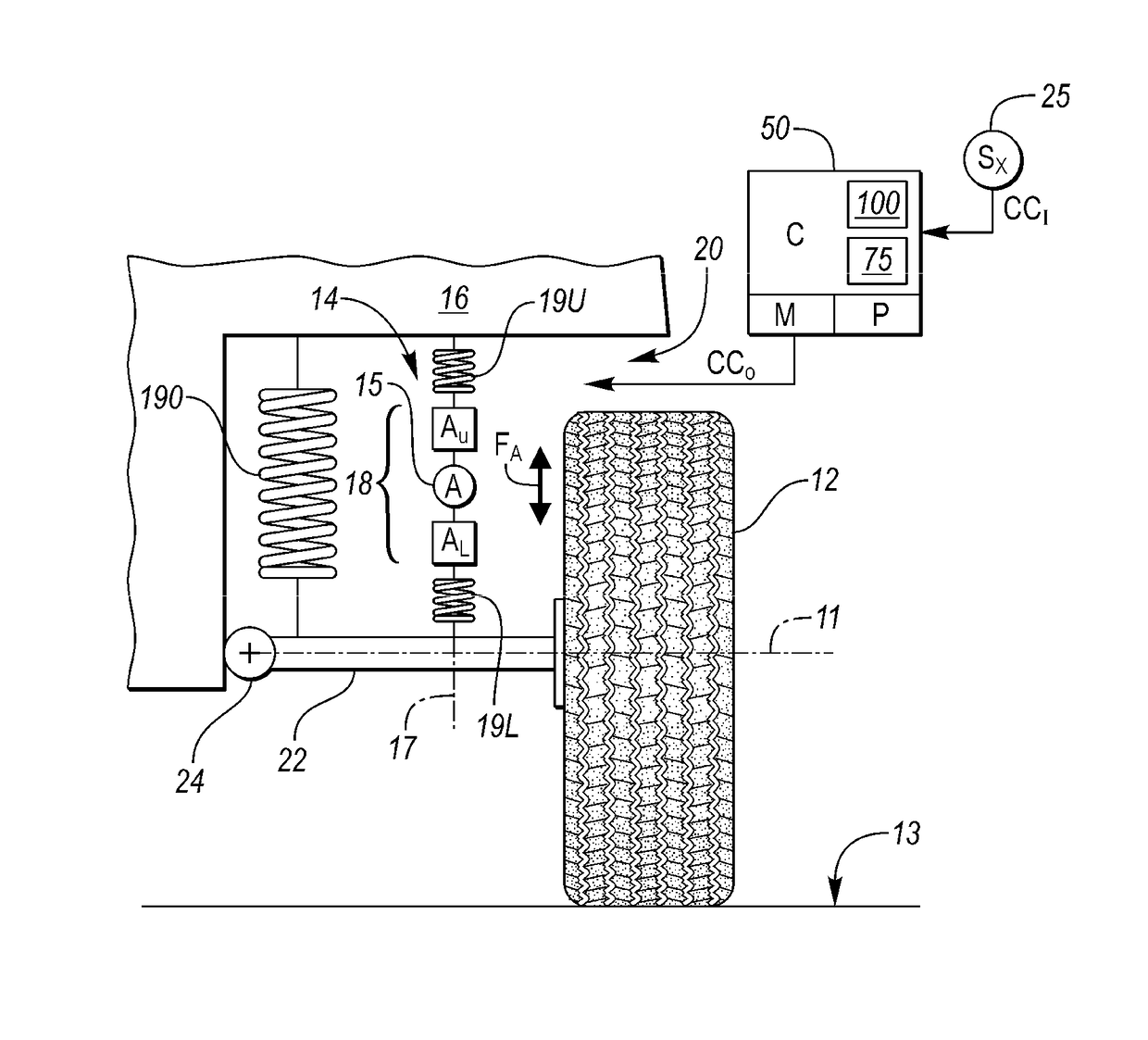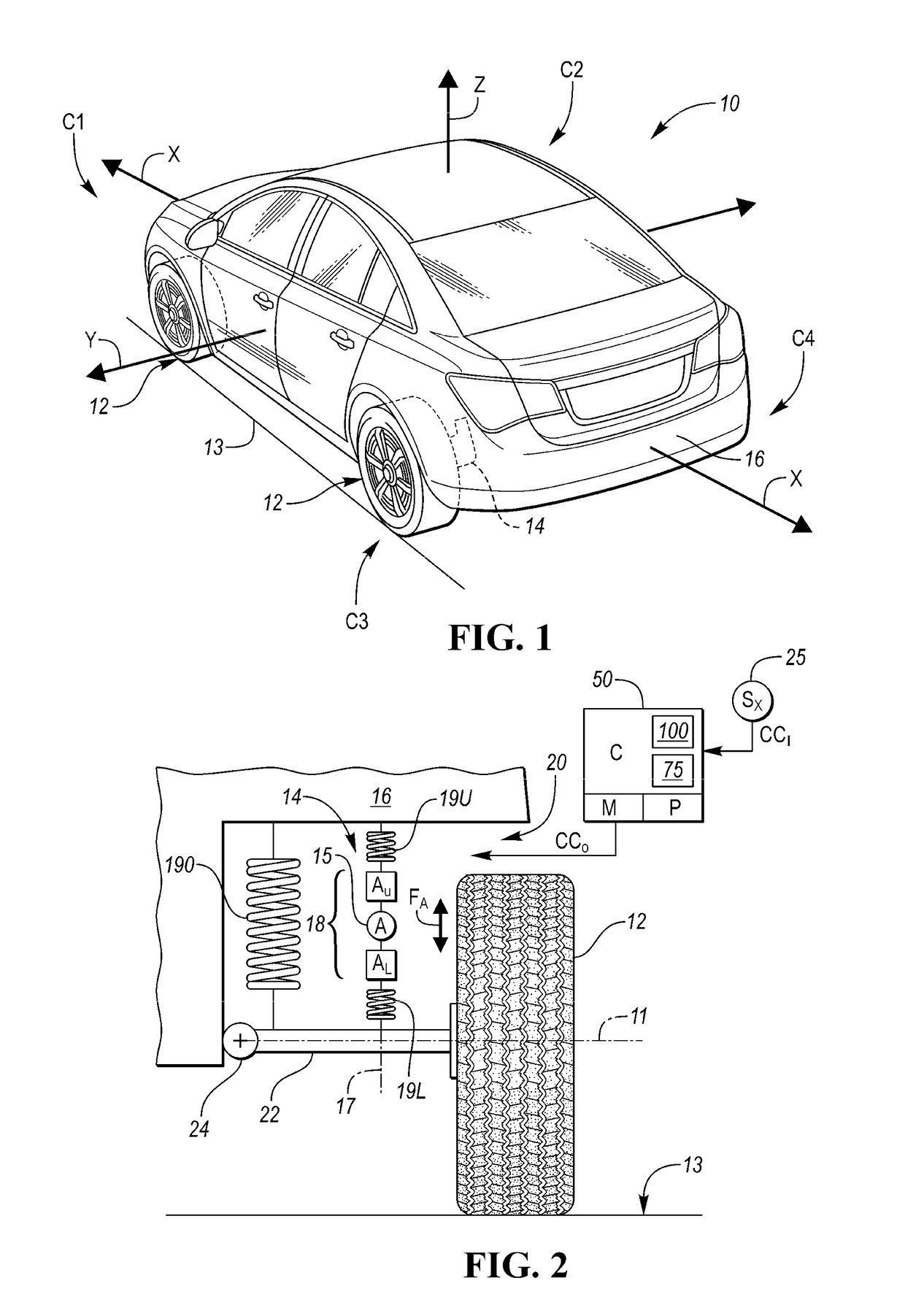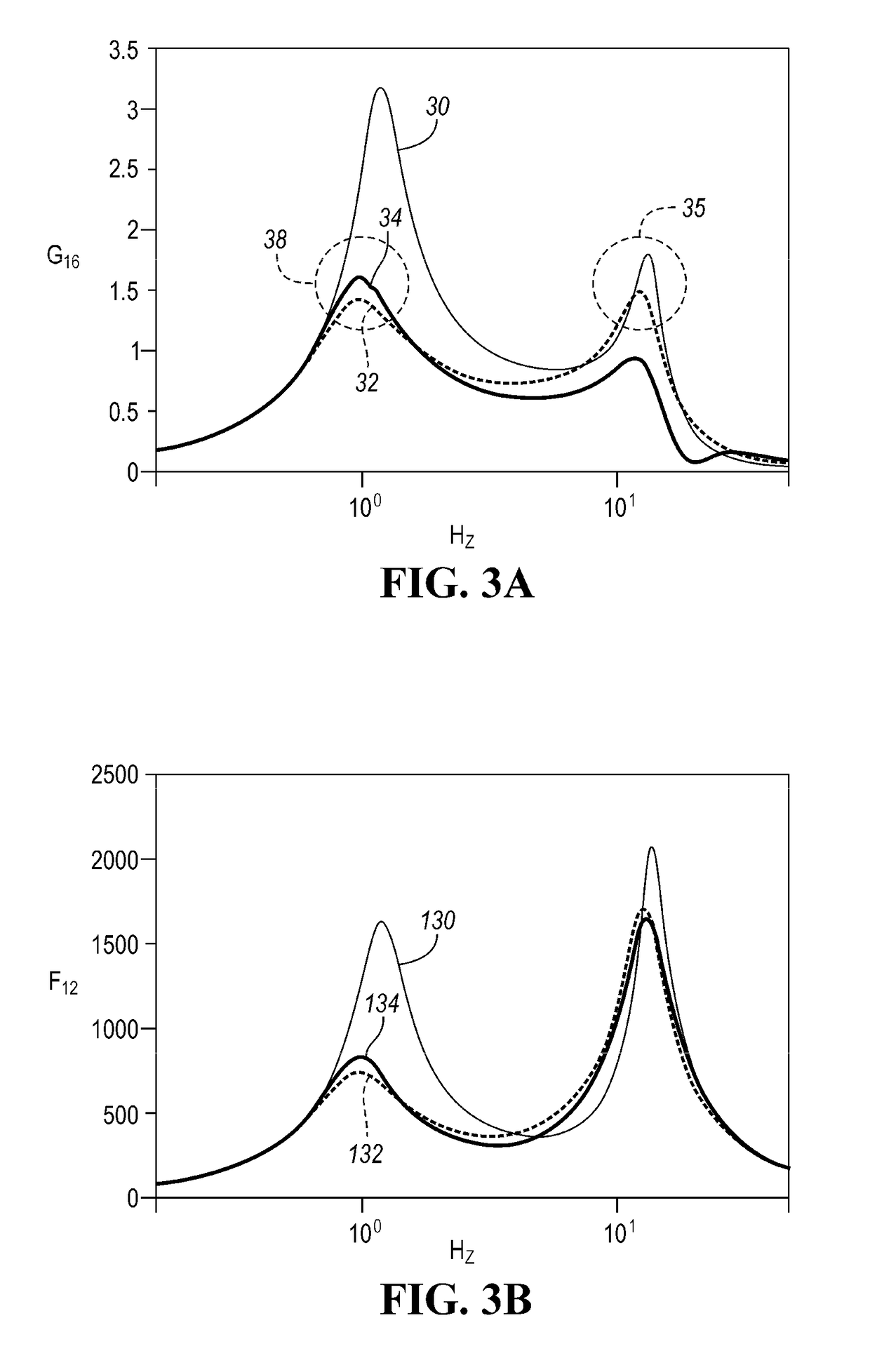Vehicle with suspension force decoupling system
a technology of suspension and decoupling system, which is applied in the direction of resilient suspension, vehicle springs, vehicle components, etc., can solve the problems of grip fluctuations on the road surface, and achieve the effect of improving the performance of existing corner suspension systems and improving overall ride comfor
- Summary
- Abstract
- Description
- Claims
- Application Information
AI Technical Summary
Benefits of technology
Problems solved by technology
Method used
Image
Examples
Embodiment Construction
[0014]Referring to the drawings, wherein like reference numbers refer to like components, FIG. 1 provides a schematic view illustration of an example vehicle 10 having a plurality of road wheels 12 in rolling contact with a road surface 13. The vehicle 10 includes a vehicle body 16 arranged with respect to a vertical (Z), longitudinal (X), and transverse / lateral (Y) axis in an example XYZ Cartesian coordinate system. In the example embodiment of FIG. 1, the vehicle 10 has four corners C1, C2, C3, and C4. Each of the road wheels 12 is disposed at one of the corners C1-C4, and is operatively connected to a suspension force decoupling system 14 as described herein. Although four road wheels 12 and thus four corners C1-C4 are shown in FIG. 1, a vehicle 10 having fewer or more road wheels 12 may be envisioned within the scope of the present disclosure.
[0015]Although omitted from the Figures for illustrative simplicity, the vehicle 10 also includes a powerplant configured to generate a dr...
PUM
 Login to View More
Login to View More Abstract
Description
Claims
Application Information
 Login to View More
Login to View More - R&D
- Intellectual Property
- Life Sciences
- Materials
- Tech Scout
- Unparalleled Data Quality
- Higher Quality Content
- 60% Fewer Hallucinations
Browse by: Latest US Patents, China's latest patents, Technical Efficacy Thesaurus, Application Domain, Technology Topic, Popular Technical Reports.
© 2025 PatSnap. All rights reserved.Legal|Privacy policy|Modern Slavery Act Transparency Statement|Sitemap|About US| Contact US: help@patsnap.com



